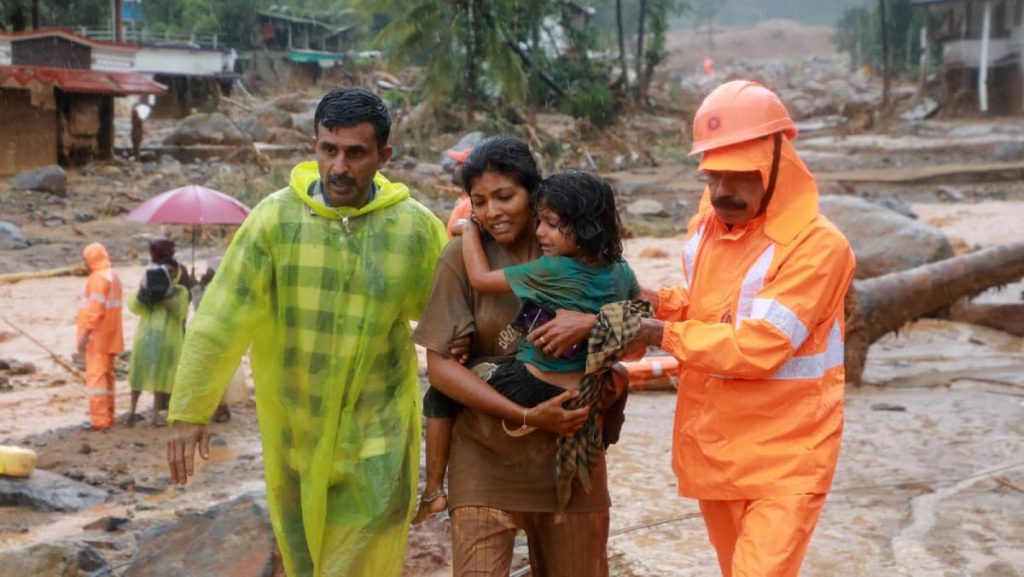Landslides caused by heavy rain in Kerala, India, have resulted in at least 93 deaths, with most victims being tea estate workers and their families. The landslides occurred in the Wayanad district of Kerala, a popular tourist destination in the state. Rescue efforts were hindered by uprooted trees, flattened structures, and boulders blocking access paths. Television footage showed rescue workers struggling through the wreckage to reach victims, with one man stuck in chest-high mud for hours before being rescued.
The landslides left around 100 families stranded in the affected area, with nearly 350 families residing in the region primarily known for tea and cardamom estates. State officials reported that 250 people had been rescued so far, but the search and rescue operation was ongoing. The difficult terrain and continued heavy rainfall made evacuation efforts challenging. In addition to the casualties, many families were left homeless and in need of assistance.
The incident highlighted the dangers of living in hilly regions prone to landslides, especially during periods of intense rainfall. Residents in such areas face the risk of losing their homes and livelihoods due to natural disasters like landslides. The devastation caused by the landslides in Kerala underscored the urgent need for improved disaster preparedness and mitigation measures in vulnerable regions to minimize the impact on human lives and property.
Rescue teams were seen in action, navigating through the debris and mud to reach those stranded or injured in the landslides. The teams worked tirelessly to evacuate families and provide medical assistance to those in need. Efforts were also made to assess the extent of the damage caused by the landslides and to ensure that affected communities received the necessary support and resources to recover from the disaster.
As the death toll continued to rise and families awaited news of missing loved ones, the tragic aftermath of the landslides in Kerala underscored the vulnerability of populations living in landslide-prone areas. The immediate focus was on rescuing those still trapped and providing relief to affected families, but attention also turned towards long-term solutions to prevent similar disasters in the future. Authorities and experts were called on to review existing policies and practices to enhance disaster management strategies and ensure the safety of communities at risk.
The landslides in Kerala served as a wake-up call for government agencies, policymakers, and communities to prioritize disaster preparedness and resilience-building efforts. Enhanced monitoring systems, early warning mechanisms, and infrastructure improvements were identified as key areas for intervention to mitigate the impact of future landslides and similar natural disasters. The tragedy in Kerala underscored the importance of proactive measures to protect vulnerable populations and prevent loss of life in the face of extreme weather events and environmental hazards.


